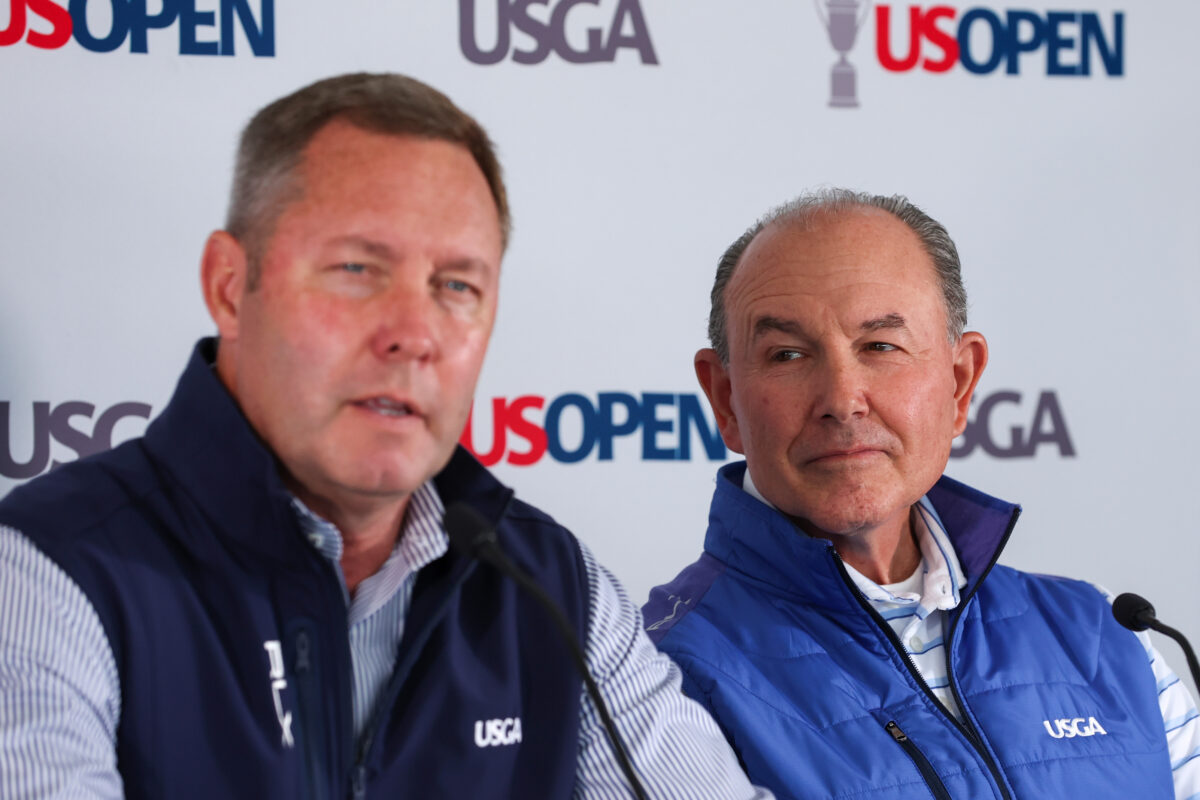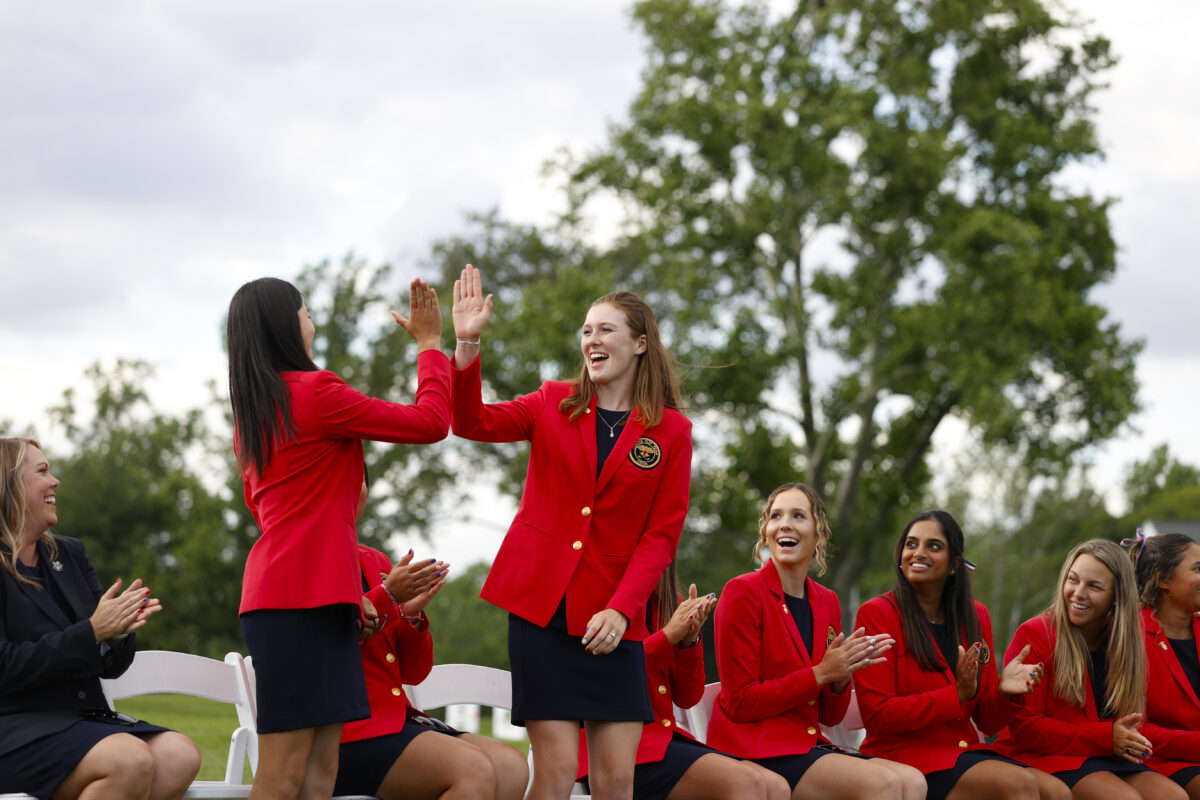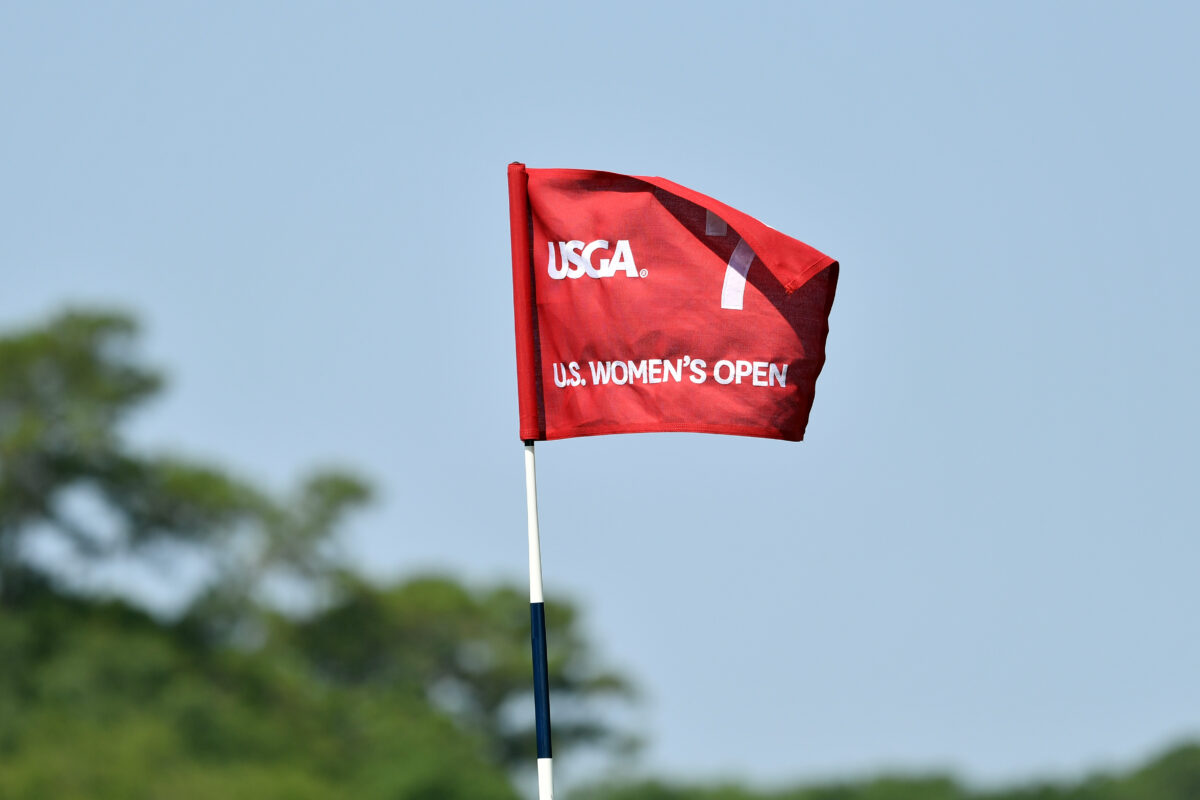Mollie Marcoux Samaan began work as the LPGA’s ninth commissioner on Monday. On the drive over from her rental home in Winter Park, Florida, to tour headquarters in Daytona Beach, she texted predecessor Mike Whan to say that she was on her way.
“You’re going to hate the commute,” Whan told her, “but you’re going to love the people and you’re going to love the job.”
IMG and her new tour family sent bouquets of flowers to brighten up the office. She had a box of family photos in the car. Decorating isn’t exactly a priority for Marcoux Samaan, who has created a 100-day plan that would essentially end as the tour wraps up its 2021 season in Naples, Florida. Phase I consists of listening and learning.
Marcoux Samaan, who was named commissioner in late May, met with members of the press on Thursday, and while she didn’t lay out specific details of future plans, she did share a passion of growing the consumer base from a marketing perspective.
“We have amazing stories to tell,” she said, “and I feel like more of the world should know these stories and should know our amazing athletes.”
Over the past two months, Marcoux Samaan has transitioned out of her role as Princeton athletic director, found a new place to live with her husband, three kids – Maddie (18), Catie (15) and Drew (12) – and dog near the Winter Park Golf Course. She plans to make the Solheim Cup the first official event she attends as commissioner. From there, Marcoux Samaan said she’ll be at all remaining events on the 2021 LPGA schedule.
Golfweek met with Marcoux Samaan on Thursday in her new corner office digs. Here are excerpts from that conversation:
Tell me about your family.
My husband is Andrew. He’s a lawyer and he’s done a lot of entrepreneurial things, but he is joining forces with a client that he’s had for years and they are starting a venture capital fund in September.
I have an 18-year-old daughter who graduated from high school, but she’s taking a PG (post graduate) year back at the same school. She went to The Lawrenceville School in New Jersey, that’s a boarding school but she was a day student. She’s an ice hockey player and really committed student. She’s committed to Williams College for ice hockey, but she’s taking a year because of COVID … going back and she’s going to be a boarder. She’s been a little too serious. I’m like go have some fun. Not too much fun, but go have some fun.
And then I have a junior in high school, a girl, who started school today and you can imagine how excited she is to be going to a new school her junior year, but she’s doing great and she’s going to Lake Highland Prep. She started this morning. Her uniform is too big for her, and her brother was late and all of that, but she’ll be fine. She plays soccer and lacrosse and she’s a pretty committed student as well and a great kid. She’s been giving it to me a little bit about the move, but she’s been largely positive.
Then I have a 12-year-old son who is a whole different enterprise. During this whole transition part of it was like two jobs, and the house and schools and the move but what people didn’t know was that I was constantly on him to finish the school year. He had kind of decided that he was done, but school hadn’t decided he was done. Someone asked and I said my hardest job right now is getting him to finish his homework.
But he did it all, and got it done. He’s really an easy kid, upbeat, a great athlete. He’s fine. As long as they have lacrosse, as long as they have golf, soccer, hockey.
So he’ll be on the golf team?
He plays golf, it’s not his main sport. We play together as a family, but he’s never really competed. But he decided he wanted to try out for the golf team and in typical working mother fashion, I did not get all the forms in in time so he is now trying out next week.
I talked to Mike a while back and he indicated that you guys had talked a lot. How often have you talked via phone or text?
We had two long meetings, spent a whole morning with him up at the USGA office and he came down and spent a couple hours. Three or four phone calls and a decent number of texts. Really more he’s just like whatever you need.
The senior executive leadership team, I really have been on that call every week since the announcement. In the beginning, just really listening and then now being able to run that meeting. That has given the most context.
I know you’ve been to a couple tournaments so far, and I’m sure you’ve had other conversations with check writers. I’m wondering what has been the most impactful or informative conversation you’ve had with a check writer about how all of this goes?
I don’t want to necessarily single anyone out … for example, listening to KPMG CEO Paul Knopp, I got to have lunch with him and his senior team and hearing kind of their passion for what we do but then he kind of impromptu had to hand the trophy to Nelly Korda and
his words were very heartfelt … just seeing how much it meant to him. Same thing with Jim Fitterling at Dow. He was there every day. That’s the other thing, these CEOs being at the events all week and engaging in all parts of it. Again not to single anyone out, I had a great conversation with Terry Duffy at CME and the great passion that he shows.
Mostly just to say God, these top level CEOs really love the LPGA, and what it says and what it does and how they use it.
When Stacy Lewis was the No. 1 player in the world, the tour developed a lot of strong partnerships out of that time … what do you think Nelly’s impact could be on the tour and how do you think you can capitalize on this moment in time?
Listen, she’s a great ambassador. One of the things you notice when you see her is, oh my God this is an athlete. I saw a picture of when I was handing her caddie the (No. 1) bib, and she’s like a foot taller than I am and I’m not necessarily short. She just has a tremendous presence and a tremendous amount of athleticism and she’s just a great representative. I do think our stars are really important, our whole membership base is really important.
You talked in a previous conversation about the importance of wanting to narrow the financial gap between the men and the women. Have you thought more about how you might do that?
It’s not an easy fix. If it were an easy fix someone would’ve done it a long time ago. Two things, one knowing that’s sort of a goal and putting that front and center and how we get there. And then just looking at what flows to that. What do we need to do across the whole ecosystem to get to that point? Looking at all of our tournaments, growing partnerships, growing relationships and looking at our full tournament complement. I do believe that it’s like a tipping point. The more we can expose the world to our athletes, the more interest there is, the more the rising tide lifts all boats. I think the focus is to get exposure and to build an audience that is even larger than the audience we have. It’s just getting to the tipping point so the world sees how amazing our athletes are.
When you took a sip of that Diet Coke it reminded me of the heavily caffeinated Mike Whan. Do you come close to him in the amount of Diet Cokes a day?
I don’t know how much he drank, but I do have a bit of an issue with it. When Mike was coming to Princeton we met in the, we built this performance center at the golf course at Princeton with hitting bays and a simulator area. We have a refrigerator and I was like I’ve got to stock it, what does he eat? She’s like all you need is Coke Zero and some nuts.
You fit right in …
He could’ve just left his Coke Zero.
I know you were at the U.S. Senior Women’s Open. What’s the best piece of advice you’ve gotten from one of the veteran players or a meaningful conversation that you’ve had?
I’ve been friends with Jane Geddes for a number of years. Gigi, her wife, worked with me at Chelsea Piers. We had kids in daycare together. Their twins were best buds with my son. Jane has given me a lot of great insight — but I’ve also met with Dottie Pepper in person. She and I used to play golf together as kids. We met in New York and she drove down and gave me great context.
I also had a great conversation with Nancy Lopez and met with Annika … I think just hearing Nancy Lopez’s continued passion for the LPGA … They grew up together, they were on the tour together … it’s kind of like a college. This loyalty and enthusiasm. It wasn’t a job, it was a family.
Just continuing that. I think hearing from all the players about how important that is, that as we grow, that we maintain that same gratitude and that same sort of commitment to act like a founder. I love that phrase and want to keep that.
Have you figured out this big board yet (Whan’s old dry erase board with the 2021 and 2022 schedules)?
This is interesting. This has to be kind of the crux … I think this is it. I think that’s the great advice Mike gave me. I asked him the question you just asked me … Where did you spend a lot of your time?
Our job is to provide these opportunities for our women to make a living through golf and to live their dreams through golf. This is not my writing. I’ve got it on my desk. But our team is really good, and our partners are good, but this definitely fuels the engine.
[listicle id=778058320]












